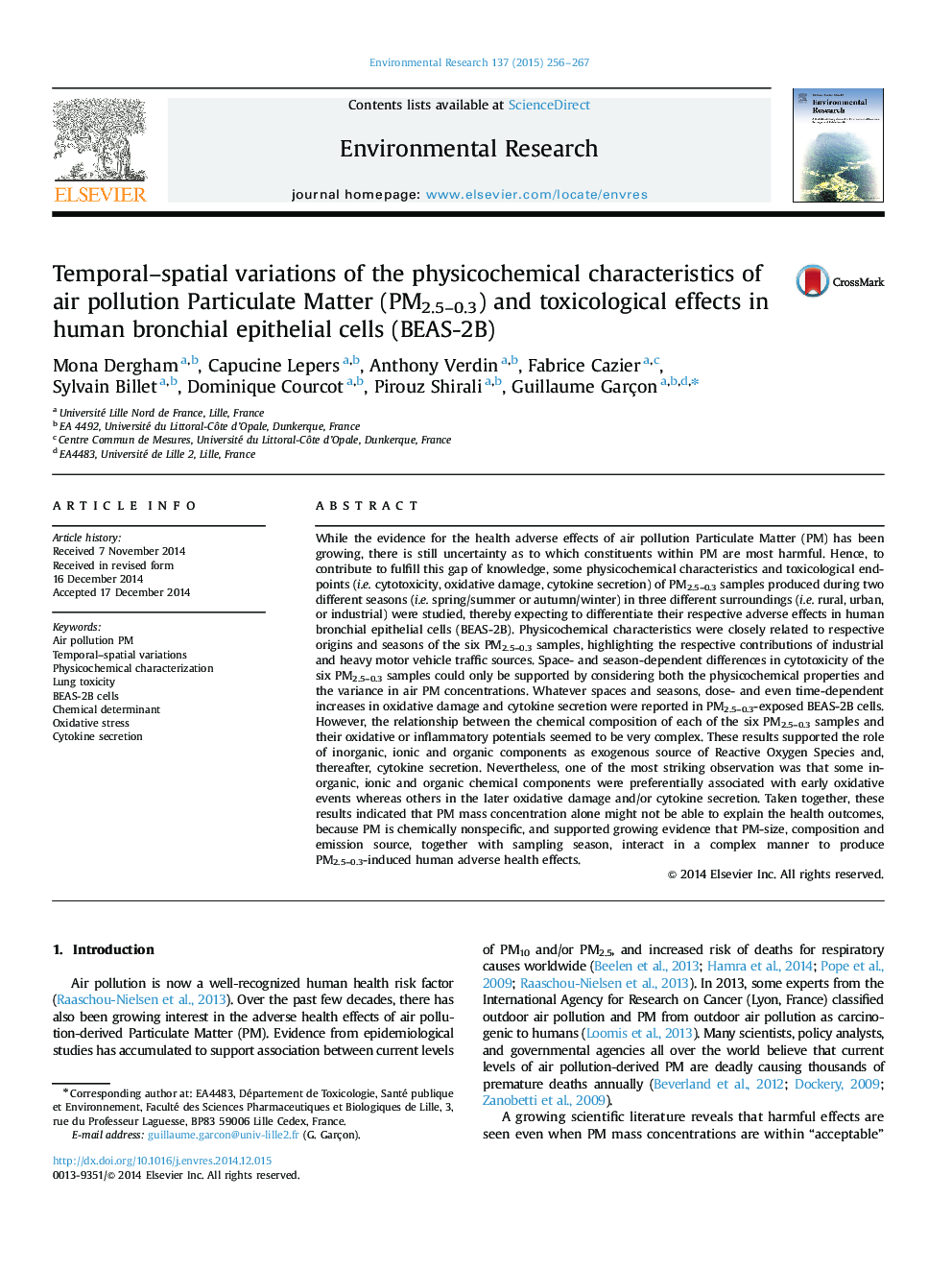| کد مقاله | کد نشریه | سال انتشار | مقاله انگلیسی | نسخه تمام متن |
|---|---|---|---|---|
| 6352710 | 1622564 | 2015 | 12 صفحه PDF | دانلود رایگان |
عنوان انگلیسی مقاله ISI
Temporal-spatial variations of the physicochemical characteristics of air pollution Particulate Matter (PM2.5-0.3) and toxicological effects in human bronchial epithelial cells (BEAS-2B)
دانلود مقاله + سفارش ترجمه
دانلود مقاله ISI انگلیسی
رایگان برای ایرانیان
کلمات کلیدی
موضوعات مرتبط
علوم زیستی و بیوفناوری
علوم محیط زیست
بهداشت، سم شناسی و جهش زایی
پیش نمایش صفحه اول مقاله

چکیده انگلیسی
While the evidence for the health adverse effects of air pollution Particulate Matter (PM) has been growing, there is still uncertainty as to which constituents within PM are most harmful. Hence, to contribute to fulfill this gap of knowledge, some physicochemical characteristics and toxicological endpoints (i.e. cytotoxicity, oxidative damage, cytokine secretion) of PM2.5-0.3 samples produced during two different seasons (i.e. spring/summer or autumn/winter) in three different surroundings (i.e. rural, urban, or industrial) were studied, thereby expecting to differentiate their respective adverse effects in human bronchial epithelial cells (BEAS-2B). Physicochemical characteristics were closely related to respective origins and seasons of the six PM2.5-0.3 samples, highlighting the respective contributions of industrial and heavy motor vehicle traffic sources. Space- and season-dependent differences in cytotoxicity of the six PM2.5-0.3 samples could only be supported by considering both the physicochemical properties and the variance in air PM concentrations. Whatever spaces and seasons, dose- and even time-dependent increases in oxidative damage and cytokine secretion were reported in PM2.5-0.3-exposed BEAS-2B cells. However, the relationship between the chemical composition of each of the six PM2.5-0.3 samples and their oxidative or inflammatory potentials seemed to be very complex. These results supported the role of inorganic, ionic and organic components as exogenous source of Reactive Oxygen Species and, thereafter, cytokine secretion. Nevertheless, one of the most striking observation was that some inorganic, ionic and organic chemical components were preferentially associated with early oxidative events whereas others in the later oxidative damage and/or cytokine secretion. Taken together, these results indicated that PM mass concentration alone might not be able to explain the health outcomes, because PM is chemically nonspecific, and supported growing evidence that PM-size, composition and emission source, together with sampling season, interact in a complex manner to produce PM2.5-0.3-induced human adverse health effects.
ناشر
Database: Elsevier - ScienceDirect (ساینس دایرکت)
Journal: Environmental Research - Volume 137, February 2015, Pages 256-267
Journal: Environmental Research - Volume 137, February 2015, Pages 256-267
نویسندگان
Mona Dergham, Capucine Lepers, Anthony Verdin, Fabrice Cazier, Sylvain Billet, Dominique Courcot, Pirouz Shirali, Guillaume Garçon,